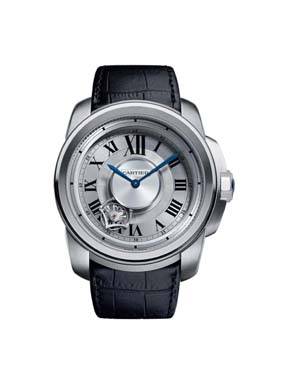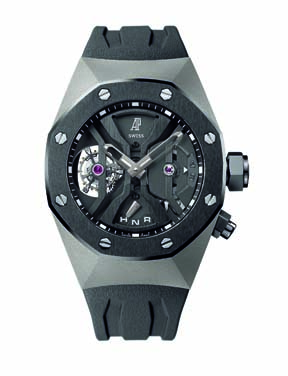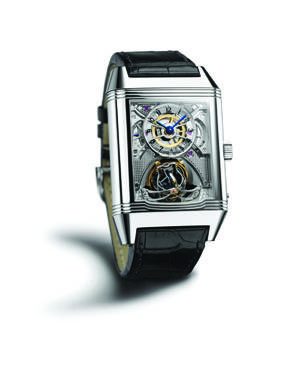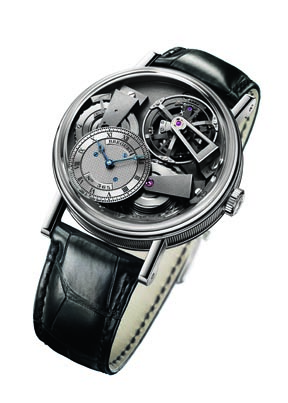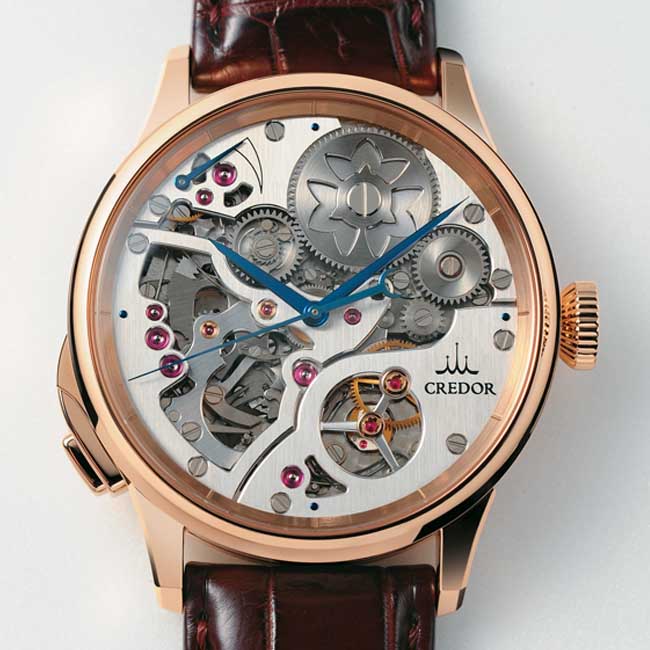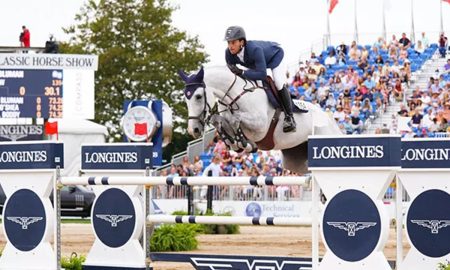
The Cartier Rotonde Astrotourbillon
If kinetic fireworks are what catch your eye, you won’t be able to look away from the Astrotourbillon by Cartier. The Astrotourbillon, launched in 2010 as part of the Cartier Fine Watchmaking Collection, sends the escapement whizzing around the dial in just sixty seconds. That’s thanks to its position on a jumbo-sized tourbillon carriage whose pivot is hidden under the center of the dial, creating the illusion that the balance is moving with no mechanical connection to the rest of the watch. This visual sleight-of-hand is courtesy superstar watch designer Carole Forestier-Kasapi, whose ingenuity has given birth to some of modern watchmaking’s most unusual tourbillons, and who now makes her magic exclusively for Cartier. $129,000
The Audemars Piguet Royal Oak Concept GMT Tourbillon
AudemarsPiguet made the world’s first self-winding tourbillon in 1986 and they’ve been breaking new ground ever since. Their latest tourbillon super watch is the Royal Oak Concept GMT Tourbillon, which mates a tourbillon (mounted under an anodized aluminum bridge) with a dual time zone function and a 237 hour power reserve in a faceted case of titanium that puts a stealth fighter twist on the classic octagonal Royal Oak case. Topping it off is a gleaming black ceramic bezel, using this high tech material derived from the aerospace and F1 arenas to create a new vision of luxury, just like the original Royal Oak did for stainless steel in 1972. $213,300
The Jaeger- LeCoultre Reverso Gyrotourbillon II
Does the tourbillon make a watch more accurate? After all, that’s what it was originally designed to do. Industry experts like Cartier’s Carole Forestier and AudemarsPiguet’sGiulioPapi agree that it can, but with a reservation –it has to be a very good tourbillon. If that’s the criterion, then meet the cream of the crop: the Jaeger LeCoultreGyrotourbillon II. In 2009, it took one of two top slots at the Concours de Chronometrie, the first Swiss accuracy competition since 1972. It’s a tourbillon inside a tourbillon, rotating the escapement around two axes instead of one –an adaptation to the wristwatch of Breguet’s original design that showed the tourbillon still has it where it counts. 250,000 euros
La Tradition Breguet Fusee Tourbillon
The company started by the man who created the tourbillon is still in business, and still means business. Time doesn’t stand still and at Breguet, neither does the design of the tourbillon. The Tradition Fusée Tourbillon, as the name implies, keeps many elements of the Master’s original designs, but updates them with state-of-the-art features like a balance spring made from high-tech silicon, and old-school features like the chain transmission system known as a fusée –originally used by clockmakers hundreds of years ago to smooth out power variations from the unwinding mainspring that could upset accuracy. $180,700







